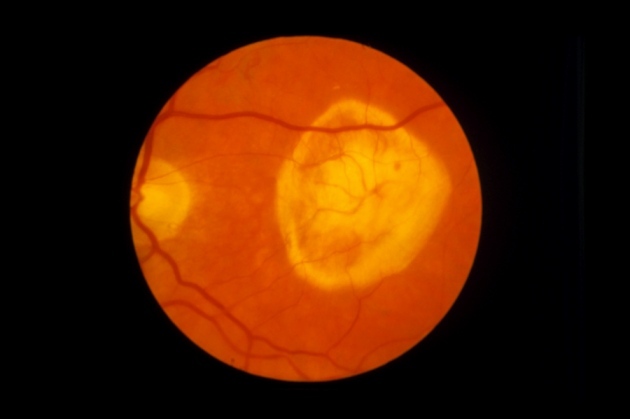Marks & Spencer. Oasis. Football (proper football) for the first hundred years. The list of great British ideas to fall flat on their faces in the United States is a lengthy one. It is a roll-call of infamy that sprang to mind last month, when plans emerged to establish a Science Media Centre in the United States.
The original Science Media Centre (SMC) began in London in 2002. It offers the media a clearing house for scientific briefings and packaged quotes from scientists. On its own terms, it has been an outstanding success. A combination of factors lies behind this impact: the energy of the centre's staff; the backing of sponsors, including scientific societies, major corporations and most governmental and non-governmental research funders; and a close-knit London media circle.
Science media centres similar, but not identical, to that in London already exist in locales as far apart as Australia, Canada and Japan. But it seems to me, as someone who has worked as a reporter and an editor on both sides of the Atlantic, that there are formidable obstacles to a successful introduction of the concept to the United States.
For a start, the 'problem' regarding science and the public is different in each place. The London SMC was set up because UK scientific leaders were upset that environmentalists had successfully fought the introduction of genetically modified food; they felt that the UK media were too susceptible to environmental scare stories about new technologies.
The main public-relations challenge facing science in the United States is different — bitter social and political division over stem-cell research, global warming, creationism and much else besides. A US Science Media Centre would either avoid these highly partisan issues — and face irrelevance — or step right into them, and take a level of heat that the UK SMC has never experienced.
Second, US journalists, justifiably or not, have higher self-regard than their British counterparts and are likely to take strong issue with the 'churnalism' aspects of the SMC. Under pressure as US reporters may be, they don't want to share 'pooled' quotes.
Third, the entire media picture in the United States is much larger and more diverse. There isn't the direct competition between titles that obliges the main London newspapers to run so many stories every day, in case readers miss something. Broadcasting dwarfs print media in its US reach, and is itself now being eclipsed by a plethora of new media — ranging in scope from an unread Tweet to The Huffington Post — as the principal source of news.
Supporters say that the US SMC would reflect this scale and diversity, doing most of its work online. But it is hard to see how a digital SMC would differentiate itself from other interest groups.
Finally, the top echelons of the US media — what Newt Gingrich would call the 'liberal media elite' — are particularly sensitive to the nature of their sources of information. If an organization in Washington or New York, co-funded by government and big business, tried to sell them a line, they would recoil.
“US science faces a bitter social and political division over stem cells, global warming and creationism.”
The London SMC's narrow approach to risk assessment — if you want to hear about the risks of nuclear power, say, just ask your local nuclear engineer (see Nature 471, 549; 2011) — sits happily with the prevalent ethos of British journalism. This was, of course, immortalized by the otherwise-obscure poet Humbert Wolfe: “You cannot hope | to bribe or twist, | thank God! the | British journalist. | But, seeing what | the man will do | unbribed, there's | no occasion to.”
Despite the fears of the SMC founders, the British press — led by the BBC, which treats the Confederation of British Industry with the deference the Vatican gets in Rome — is overwhelmingly conservative and pro-business in its outlook. It is quite unperturbed by the fact that SMC sponsors include AstraZeneca, BP, Coca-Cola, L'Oreal, Monsanto, Syngenta (as well as Nature Publishing Group) but not a single environmental non-governmental organization (NGO) or trade union.
Fiona Fox, the SMC's director, says that the centre operates independently of its sponsors and points out that none (except its host, the Wellcome Trust) accounts individually for more than 5% of its income. She adds that no NGOs are involved because it was their public-relations skills that the founders of the SMC sought to match. But the perception that the environmental group Friends of the Earth constitutes a bigger threat to scientific truth-telling than some of the corporate names on the SMC's sponsorship list is not one the US media would accept.
Some of those considering a US centre share these concerns. They think that their funding model will have to rely on charitable trusts, not companies or government agencies. And they see the US SMC as a source of background information and advice to help reporters to get out and do their jobs: talking to their own sources and obtaining their own quotes. That agenda would be less ambitious — and less fraught with danger.
This spring, reporters and funders in the United States will be consulted on whether the Science Media Centre can mimic the transatlantic success of a certain four-piece band from Liverpool. I fear, instead, that the fate of Robbie Williams awaits. Who, you ask? Well, exactly.
- Journal name:
- Nature
- Volume:
- 483,
- Pages:
- 247
- Date published:
- ()
- DOI:
- doi:10.1038/483247a






















What a wonderful article! I can see both sides... as long as US Journalism can see the merit of science as science and important global issues, and not simply a topic rich in conflict, controversy, and uncertainty (specifically talking about climate change). Well written!!! Macilwain and Nature, I love to contribute a worldview on the state of climate change debate in the US – both in the media and the public sphere!
I really like Colin's piece but I'm sure he won't be surprised to hear I am a little more excited about the prospect of an SMC in the US than he is.
I think one of the reasons the SMC model is proving popular with journalists in five very different countries is that we seem to defy the normal laws of PR - none of us promote our brand names or any institutional message, we are just as happy killing stories as generating column inches, and we embrace the difficult and controversial issues that many PR outfits run away from. There is no reason to believe that this unique mix won't prove as popular with US journalists as it is with those in Japan, Canada, Australia and New Zealand.
Colin's piece is pretty unflattering to the UK's science hacks; painting them as less discerning than their US counterparts and content to churn out the SMC's pooled quotes. But that really underestimates the wide range of ways that science journalists use the SMC. This week we were heavily involved in the story that broke in the Times and on Today regarding the intimidation of UK airlines and ferry companies by animal rights activists - a nice example of original journalism supported by SMC staff. There are plenty of science journalists who have never used an SMC quote but use the SMC in the way Colin clearly approves of - as a source of background information and a means of getting out and doing their job. Many others do both. If Colin is right and science journalists in the US are less likely to use quotes then the US SMC will simply operate differently. From what I know about the States the real problem is that specialist science journalists are a dying breed and the US SMC may find itself operating much more like the Australian centre, which tends to work much more with general news reporters.
SMCs around the world will of course have to operate in different cultures where attitudes to what is an acceptable funding source vary. But what really matters is whether the SMCs are genuinely independent from those funders whether they are from industry, government, the media or the scientific community.
Those who were around when Susan Greenfield first announced the SMC 10 years ago will remember that almost no-one had a good word to say about the idea. Now, as Colin says, we have turned this into something that works and people value. In a few months we will see the 6th SMC open in Denmark, complete with its own mini unit doing academic research on science and the media. The moves to set up a Centre in the US just add to my excitement that this network could do something very special in the future. Of course Colin is right to say that every SMC faces new challenges, but this model works and given the calibre of the people involved in the US, I am confident that they will meet those challenges head-on - and prevail.
Fiona Fox
Anyone interested in how ideas like the Science Media Centre might fare in the USA could benefit from looking back at the history of "SIPI": http://www.bookrags.com/research/scientists-institute-for-public-inf-enve-02/. Funded by foundations rather than companies, it provided much the same service as the SMC, and the MRS before it. SIPI, the Scientists' Institute for Public Information, failed when the foundations changed their attitude to supporting core costs rather than individual projects.
Talking to the people behind SIPI might confirm Colin's opinions. Then again, they might suggest shortcomings in his analysis.
If the US press really is so much against this sort of "help", how come SIPI survived for as long as it did?
Unfortunately, SIPI predates Wikipedia, which may explain why we can expect everyone to ignore any lessons that it might have taught us.